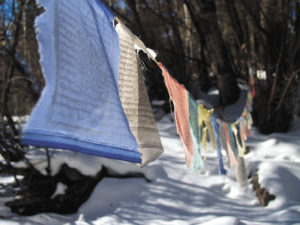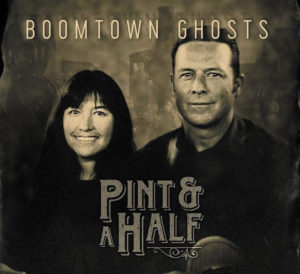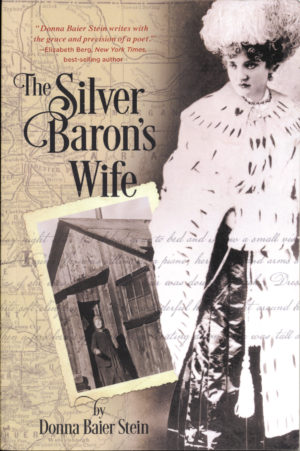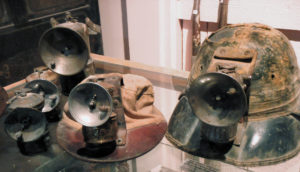By George Sibley
You’re probably thinking I mean the “Continental Divide.” No, I’m talking – again – about the lurking ghost that has always haunted America, but which burst forth in full dark bloom in last year’s election: the urban-rural divide. Or, as demographers increasingly characterize it today: the metropolitan-nonmetropolitan divide.
Basically, I’m still trying to figure out what’s happening in the world today, and how Central Colorado fits into it. Certainly the urban-rural or metro-nonmetro divide looms large in what’s happening. Metropolitan Americans elected Hillary Clinton by a good margin, while nonmetropolitan rural Americans elected Donald Trump by a good margin – with a stalemate averted by the Electoral College, which was originally included in the Constitution as a necessary inducement to get the rural slave-holding South on board with the urbanizing, industrializing North.
This triumph of nonmetropolitan America over the numerically larger metropolitan America was probably less surprising to readers of political scientist Katherine Cramer’s recent book, The Politics of Resentment: Rural Consciousness in Wisconsin and the Rise of Scott Walker. Scott Walker was the “original Trump.” He was elected governor in Wisconsin in 2010 by doing what he could to pump up rural resentment against Wisconsin’s urban Democrat axes of Madison and Milwaukee. He was most successful in exploiting antagonism against a high-speed train proposed to connect those two cities, at some cost to taxpayers, although most of it would have been borne by the federal government and the two cities.
Essentially, seven years before Trump, he exploited the same mostly rural white middle-class angst that elected Trump, and his governorship has vested on Wisconsin the same kind of creative destruction that Trump is now trying to deliver to the rest of America. He has also enjoyed a more amenable rubber-stamp Republican legislature and state court system dominated by conservatives.
[InContentAdTwo] Are the rural people of Wisconsin happy about it? Anyone looking for sadder but wiser white voters (and the mainstream metro media are already hounding Trump voters in search of regrets) will be disappointed. Wisconsonites sullenly re-elected Walker in 2014 and retained the Republican legislative majority, either in spite of or on account of his largely successful efforts to make Wisconsin a less desirable place to live, especially for those in the economic quintiles that support him.
So what’s going on? Rural anger toward the cities and their elite masters of the universe is, in fact, nothing new. There’s the Reagan Revolution and the Sagebrush Rebellion that occasionally comes to a boil from a chronic background simmer. Back a century plus there’s the first big populist eruption; and a century before that the post-Revolution Green Mountain Boys in Vermont and the Whiskey Rebels in Pennsylvania telling the East Coast bankers and mercantilists that the Revolution wasn’t over till they left with the British.
What’s new, though, is the rural sector winning – or appearing to anyway. It’s becoming increasingly clear that not much benefit is going to come to those who put both Walker and Trump in office, but by God, the city people – the governing elites, the financial elites, the media elites and all the other elites – they are all really unhappy and maybe a little disconcerted, even frightened, and that Phyrric victory is better than none!
The rural resentment in this cultural conflict is, however, tinged with some embarrassment, at the degree of rural nonmetropolitan dependence on the metropolitan sector. I’ve mentioned before the incident a few years ago when a Front Range blizzard that never touched the Upper Gunnison valleys nonetheless emptied our supermarket shelves in a few days because the delivery trucks were stuck in the city. Practically everything we need to thrive in Central Colorado comes through arrangements from some metropolitan base or another – with the usual arrangement being that we send them raw resources (livestock, produce, logs, mined minerals, at their prices), they do the value-added work with an economy of scale we can’t touch, and send back finished goods (packaged food, leather goods, lumber, tractors, and the like, again at their prices).
It’s worth noting it was not ever so. Gunnison – like rural communities everywhere in America – used to do a lot more to feed, clothe and shelter its own people, with local butchers, sawmills, flour mills, creameries, a non-boutique farmer’s market, et cetera. Exactly why or how that changed may be a socioeconomic story that warrants more exploration, but what’s clear today is a) the great and growing cities have become necessary due to relentless human population growth, and b) those cities need to capture the resource base surrounding them to provide jobs for their growing populations.
Out here in the nonmetropolitan places, we can wax philosophical. Why don’t the cities just stop growing? Just say no? Most of the metropolitan population, stressed by traffic, escalating housing prices and general crowding, would be happy to see growth slow. But people have to go somewhere, and we long ago ran out of arable, irrigable land for that lovely Jeffersonian agrarian dream where everyone lived free and independent on his or her own farm, in small locally sufficient communities. In the larger picture of human evolution, we have been trying for 6,000 years to develop the sustainable city to concentrate, effectively and efficiently the burgeoning human population – which had already outgrown the earlier agricultural adaptations evolved to relieve the post-glacial over-crowding of the hunter-forager scene (for which we unhappy campers might still be subconsciously homesick).
And – part b) above – the cities needed to ‘capture’ the raw resources of the countryside in order to give their growing populations something to do – a process of capturing that has historically involved entangling webs of city-based finance, railroading, commodities markets, and catalogs full of new shiny things to persuade (or force) local rural producers to market all their goods and services to the cities in exchange for the wherewithal to pay down debt to the bankers with enough left over to buy some of the new shiny things. Basically, agriculture has been industrialized, turned into agribusiness in which ag producers are as much cogs in a global industrial structure as oil-field workers.
Therein lies the rural resentment – a kind of irrational resentment because there is such a need to figure out how to handle human density in a sustainable manner, and those grown up in and committed to the rural life should be glad to support the conurbation effort, since the alternative to the concentrated metropolis is having all those people downloaded into the farm culture as a problem to solve.
Yes, like the song might have said, the farmer and the city should be friends, and the solution probably needs to be political as much as economic – but we tend to get politicians like Walker and Trump exploiting the resentment rather than trying to resolve it. Is there an alternative? Yes, Colorado’s water planning process.
Like the supertrain in Wisconsin, the water planning process began with an urban problem: the big Front Range metropolitan water providers realized around the turn of the century that they did not have enough water in their reserves to meet projected mid-century demographics – a possible doubling of the state’s population. They needed more water, in a state whose basins were nearly all already over-appropriated.
After the failure of one really ill-advised 2003 political effort, a $2 billion bond issue for a blank check for undefined water projects to address the metropolitan problem, the state leadership wised up and started listening to some smart old water-foxes like Russell George and Peter Nichols. A statewide system of roundtables was set up in each river basin, each to consider its own future water situation. And in 2013 Governor Hickenlooper called for a statewide water planning process – not focused on the Front Range’s obvious future problem, but a grassroots process in which the water leaders in each basin (including the metro area) would identify and then address their own needs out to mid-century; out of that, a statewide process would be assembled for addressing all concerns statewide.
The water plan has been completed, and the various basins are working with varying degrees of success at beginning their needs assessments for the next three decades. There have been denigrating critiques of the plan, and its adaptive vagueness, but there is one important thing that can be said in its favor: the rural and urban groups are talking and working together on it – even though it’s about water, the West’s most contentious topic. The Front Range and the West Slope have agreed (however reluctantly) on the conditions under which further transmountain diversions might occur. The cities are working with agricultural users studying how some ag water might by freed up, at city expense, without serious decline in ag production. Difficult, but we’re working on it. Mostly together.
One wonders what might have happened in Wisconsin had a Democrat been smart enough to run against the exploitive Walker with a statewide grassroots transportation planning process (including the supertrain) rather than just letting the urban-rural wedging happen. We’ll know before too long, I suppose, whether some Trumpish politician running for governor here will try the Wisconsin strategy, to get elected by driving a wedge between rural and urban Colorado, the metropolitan and nonmetropolitan parts of the state. But if one does, our water planning process might suggest an antidote to that destructive strategy.
George Sibley is a post-urban neo-rural writer in Gunnison – george@gard-sibley.org.




